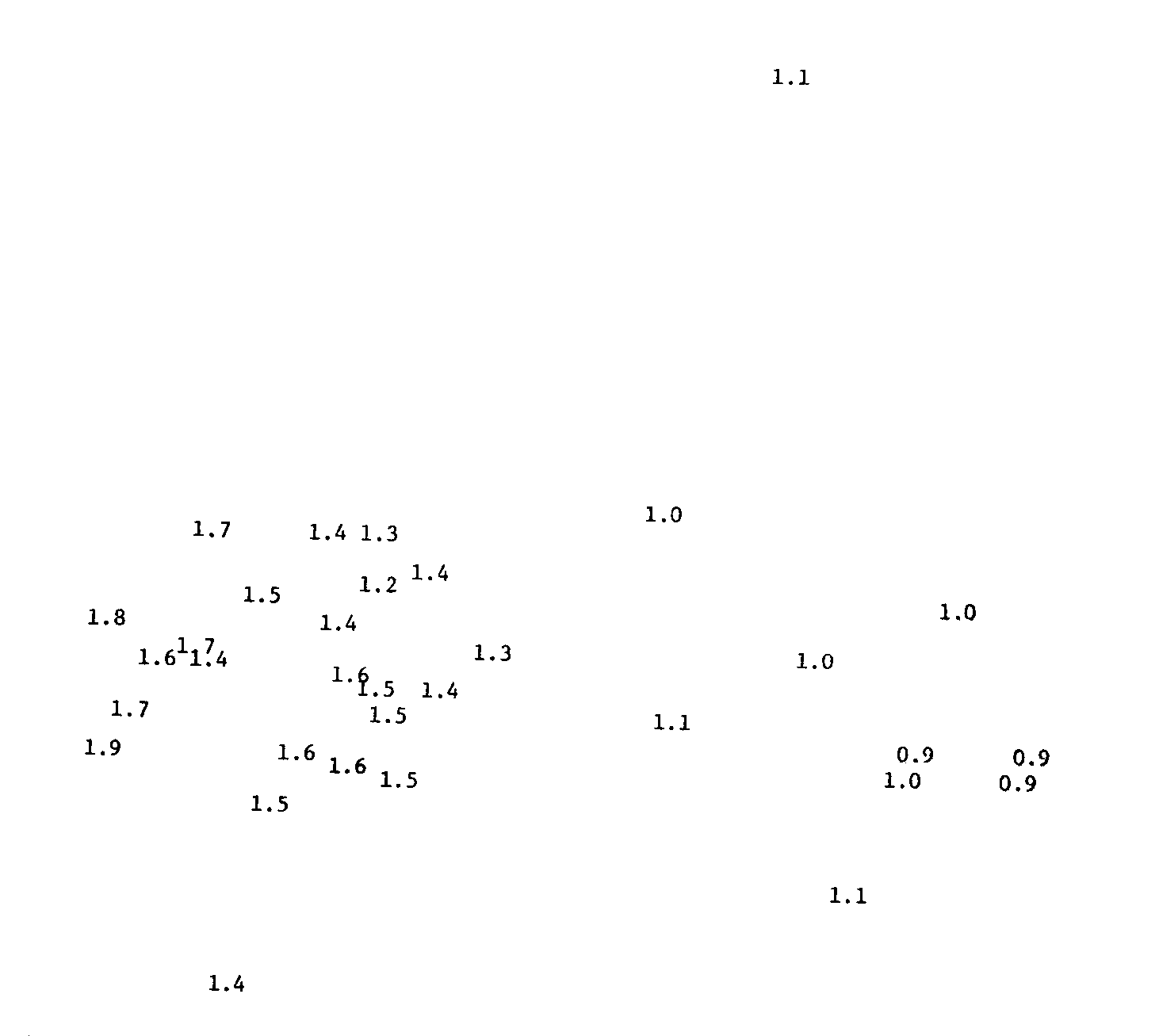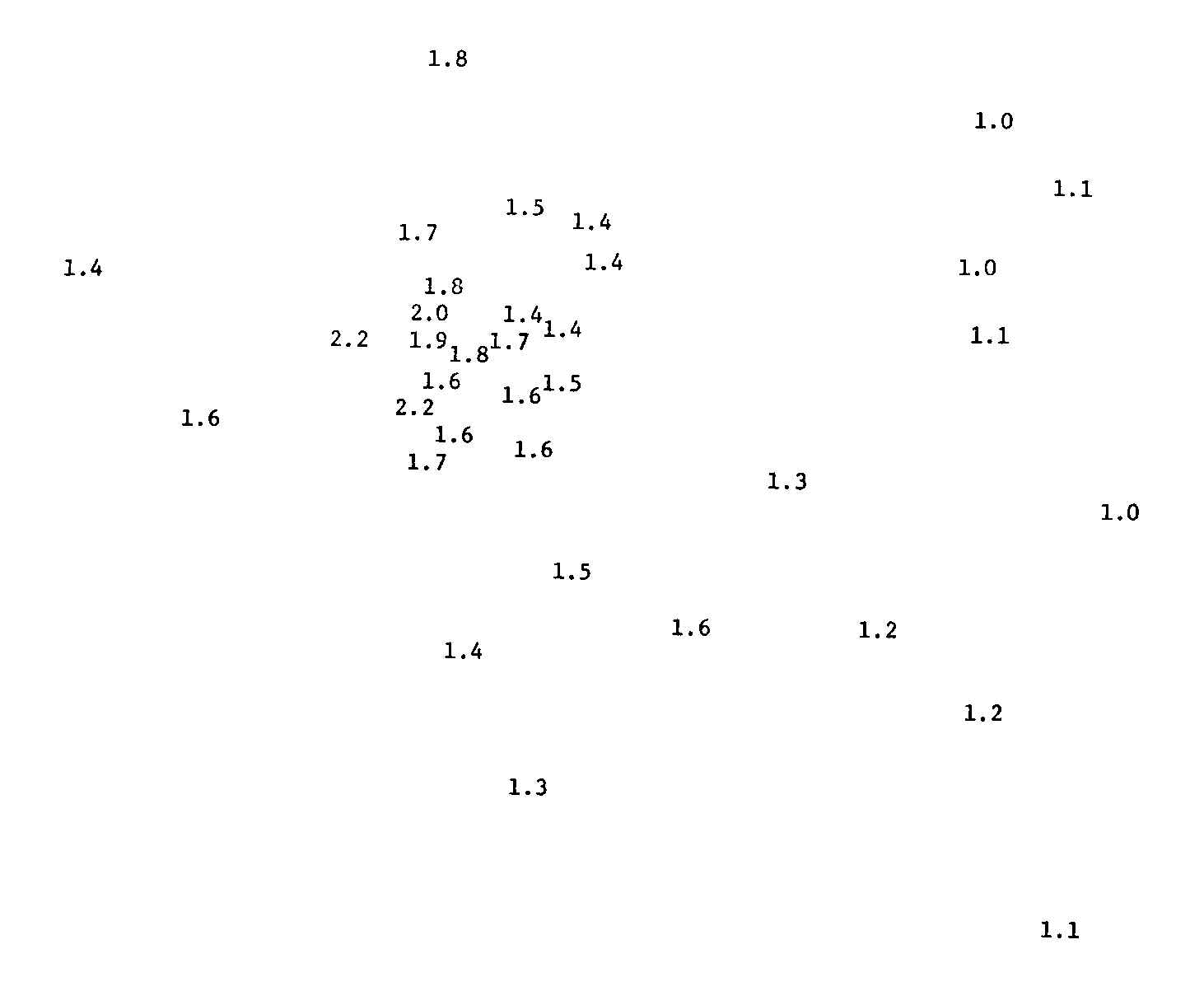
According to Wallace and Atkins (1960), the male terms in the American kinship system are completely described by their values along two dimensions: generation and lineality.
| Lineal | Collineal | Ablineal | |
|---|---|---|---|
| 2 above | GrFa | ||
| 1 above | Fa | Un | |
| same | Br | Co | |
| 1 below | So | Ne | |
| 2 below | GrSo |
Lineals are persons who are direct ancestors or descendents of ego. Collineals are nonlineals all of whose ancestors include or are included in all ancestors of ego. Ablineals are consanguineal relatives who are neither lineals nor collineals.
According to Romney & D'Andrade (1964), the male terms are best described in three dimensions: generation (3 values), lineality (2 values), role reciprocal (2 values), as follows:
| Direct | Collateral | |||
|---|---|---|---|---|
| +Recip | -Recip | +Recip | -Recip | |
| Over 2 | GrFa | GrSo | ||
| Over 1 | Fa | So | Un | Ne |
| 0 | Brother | Cousin | ||
To test the models, the researchers administered a triad test using the 8 terms (56 triads in total, each pair occurs 6 times). Then they filled out a triad test for each model -- based on the assumption that the item most different in the triad is the one most different along the underlying dimensions proposed by each model.
Consider, for example, this triad:
| GrFa | GrSo | Fa |
According to the Wallace-Atkins model, the semantic distances among the three terms are:
| GrFa | GrSo | Fa | |
| GrFa | 0 | 4 | 1 |
| GrSo | 4 | 0 | 3 |
| Fa | 1 | 3 | 0 |
The numbers refer to the number of steps separating the items in the componential grid. (They are known as city block or manhattan distances). Since (GrFa, Fa) is the most similar pair, the model predicts that GrSo will be picked as the item most different. Thus, if 100 respondents fill out this part of the triad questionnaire, the expected frequencies are:
| Triad: | GrFa | GrSo | Fa |
| Frequencies: | 0 | 100 | 0 |
In contrast, according to the Romney-D'Andrade model, the semantic distances among the terms are:
| GrFa | GrSo | Fa | |
| GrFa | 0 | 1 | 1 |
| GrSo | 1 | 0 | 2 |
| Fa | 1 | 2 | 0 |
Since (GrSo,Fa) is the least similar, it is predicted that GrFa will NOT be picked. However, both (GrFa,GrSo) and (GrFa,Fa) are equally similar, so it is predicted that people will be indifferent between Fa and GrSo, and they will be chosen with equal probability. Hence, with 100 respondents, the expected frequencies are:
| Triad: | GrFa | GrSo | Fa |
| Frequencies: | 0 | 50 | 50 |
These frequencies are obviously different from those predicted by the Wallace-Atkins model, and provide a basis for comparison. Correlating the predicted values for each model with the results obtained from two different triad experiments gave these results:
| Wallace-Atkins | Romney-D'Andrade | |
| Experiment 1 (N=116) | .33 | .86 |
| Experiment 2 (N=155) | .40 | .84 |
Incidentally, none of the models weight one dimension over another. If use a regression technique to find the right weights for each dimension, both models become more accurate, but the Romney-D'Andrade model still fits considerably better.
Romney and Wexler reanalyzed the data to look at individual variation. For each pair of respondents, they computed the percent of triads that they gave the same answer for. Here is an MDS of the 35 males in the sample, where the closer two people are, the more similar their answers.

As you can see, there were two groups, or perhaps a core group and a peripheral group. The labels for the points are actually a ratio of the number of times the person agreed with the Romney-D'Andrade model divided by the number of times they agreed with the Wallace-Atkins model. To numbers greater than 1 indicate Romney-D'Andrade people. As you can see, the group on the left tended to agree with Romney-D'Andrade, but the group on the right had some (though not much) sympathy for Wallace-Atkins. Perhaps there are two cultural models in existence.
Here is the MDS for 35 females:

Once again, there is a core group that is highly correlated with the Romney-D'Andrade model, but there are some people whose responses are closer to the Wallace-Atkins model than the core group.
For both the males and females, however, there do not appear to be any persons whose answers strongly resemble the Wallace-Atkins model. On further analysis, it appears that the 30% of respondents whose responses follow W-A as much as R-D'A, what is happening is that for those triads where multiple responses are possible under R-D'A, these 30% of respondents do not choose randomly but rather consistently choose according to model W-A predictions.